6 Basic Robots for Beginners – Simple and Easy to Make with Step by Step Guide
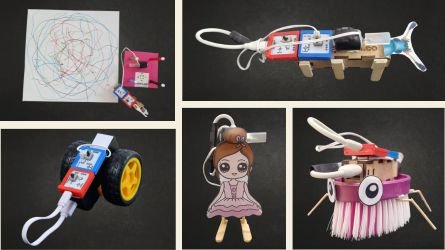
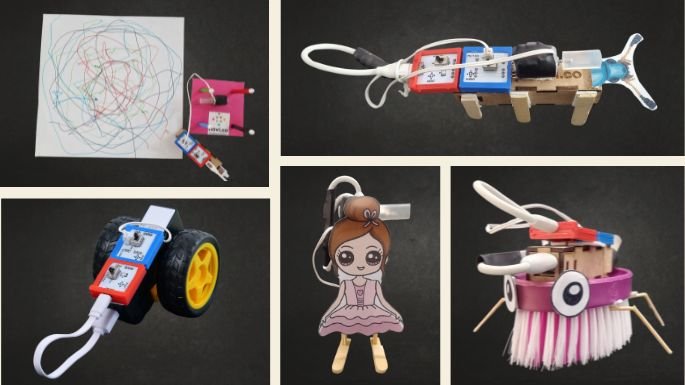
You know you can make robots at home. Na na, no arduino, no coding..! The easiest basic robots that can move, draw, dance…!
Didn’t get it? Okay, tell me, what adds motion to robots? Yes, motors. The geared and gearless motors. Let’s build 6 simple basic robots for beginners & kids with Havi’s robotics kit.
These robots are:
- Beginner & kids friendly
- Easy to make.
- Defines basic robot’s behavior.
- Helpful in understanding basic robotics motion concepts.
- Handy to represent in school science fair projects.
- Improve knowledge of motors and STEAM concepts.
So, let’s start:
1. DIY Simple robot
First of all, let’s build a basic robot that can move forward, backward and rotates around.
The simple robot, made out of Havi Elements, a single geared motor, and 2 wheels, provides a basic example of how robots move smoothly. While the making of this robot requires 5-7 minutes, it opens up endless possibilities for creative STEAM project variations. For example, we can craft a robotic figure or a creature and stick it alongside this robot to give it a form.
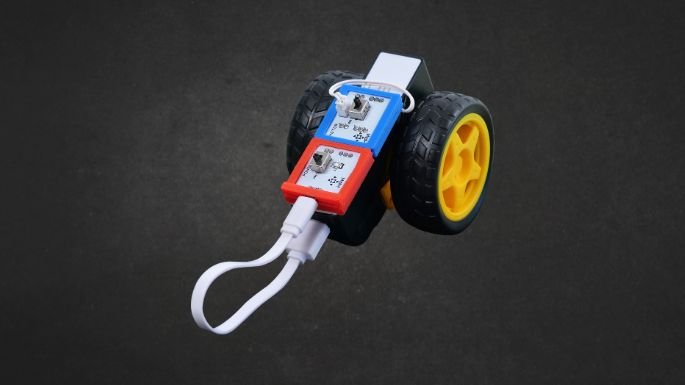
Kids can also extend it to make an artist bot that uses colors and makes artistic patterns.
2. A Scribble bot
After splashing some colors with a simple robot, now, it’s time to make a scribble bot. A robot machine that draws on a sheet of paper because of the principle of vibration. Gearless motors are used to make easy robots that moves with the principle of vibration.
Gearless motors are faster than geared motors. Geared motors use gears to make the motor stronger but slower. Gearless motors spin faster, but they aren’t as strong. We choose one or the other depending on what the machine needs to do.
To make the Scribble Bot project, in addition to Havi’s kit and a gearless motor, you will also require some craft material such as cardboard, sketch pens, a compass, etc.
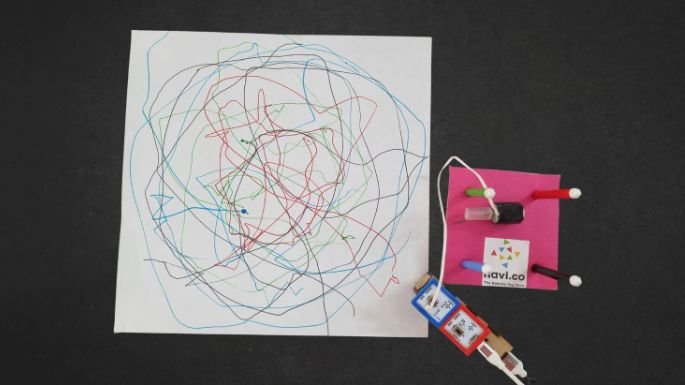
What is the difference between geared & gearless motor?
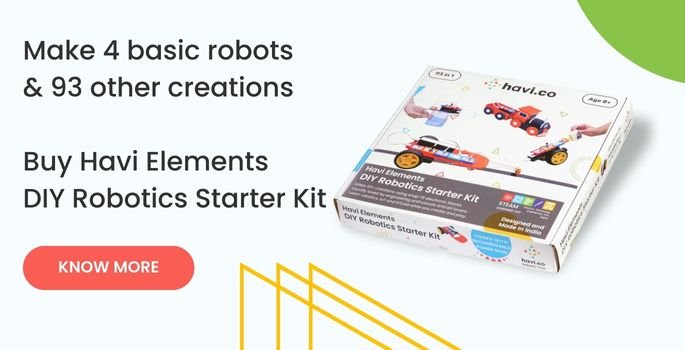
3. Robotic insect
In this robot, we mimic an insect and make it move using the principle of vibration.
We’ve seen insects that resemble robots in movies. Here, using minimal materials, we’re going to build an easy robotic insect. Additionally, you’ll need a glue stick piece to make the insect move along with the gearless motor.
Naming the robotic insect could be fun! How about “TechBug” or “MechanoBeetle”?
As for other insects using the same circuit, beginners could try creating variations like a robotic butterfly, a robotic spider, or even a robotic ant. Each of these would require slight modifications to the design and possibly additional materials, but the core circuit could remain the same.
4. The dancer bot
Dance? How? Okay, let me give you an example using your mobile phone. Keep your father’s mobile phone in vibrate mode and place it on a table. Now, ask your mother to call your father.
Let the call ring 4-5 times. Is the phone still in the same position as it was before? That’s how the vibration works in a dancing bot.
And by using the same principle of vibration of the gearless motor, we can make a basic robot that dances. Trick here is to make an art piece of dancer boy/girl.

Step-by-step instructions: Dancing robot
5. Bristle bot
Do you have brush at home? Obviously, YES. Take that brush and make an easy STEAM project of bristle bot or brush bot using it.
Make the eyes, legs etc. of this bot as per your imagination.

Step-by-step instructions: DIY Bristlebot
6. Homemade Wobblebot
Inspired by these fascinating movement? How about making one easy robot, a wobbling robot this time? Wobble bot is a DIY fun creation that wobbles because of the vibration. This robot is unpredictable and moves in any direction.
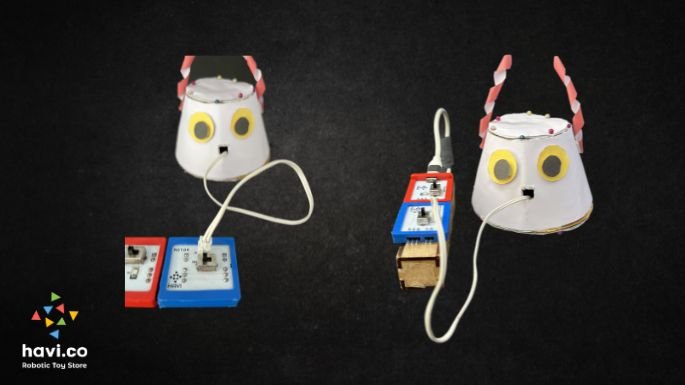
Step-by-step instructions: How to make a wobble bot at home
(PS: Mobile phones do have a tiny motor called vibration motor inside. This motor is uneven in weight distribution. One side heavier and lighter at other side. When the motor spins, uneven motions makes the vibrate, resulting in overall vibration of phone.)

